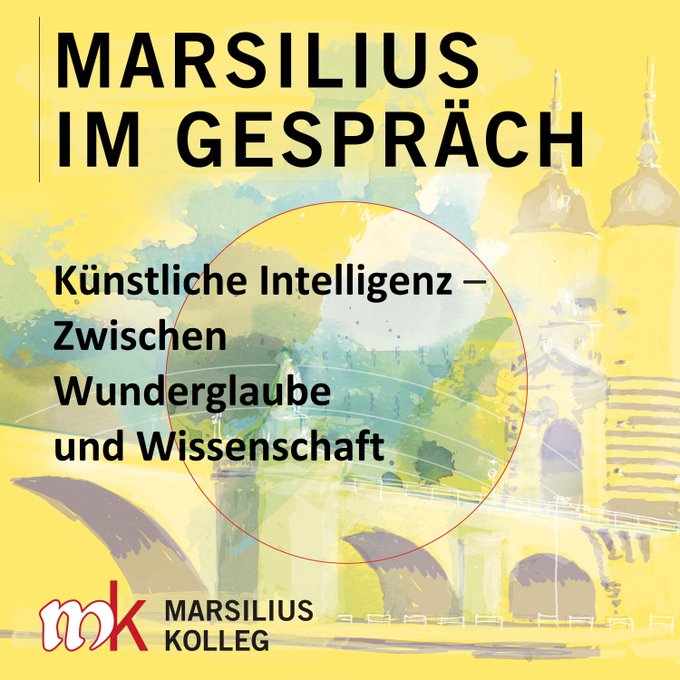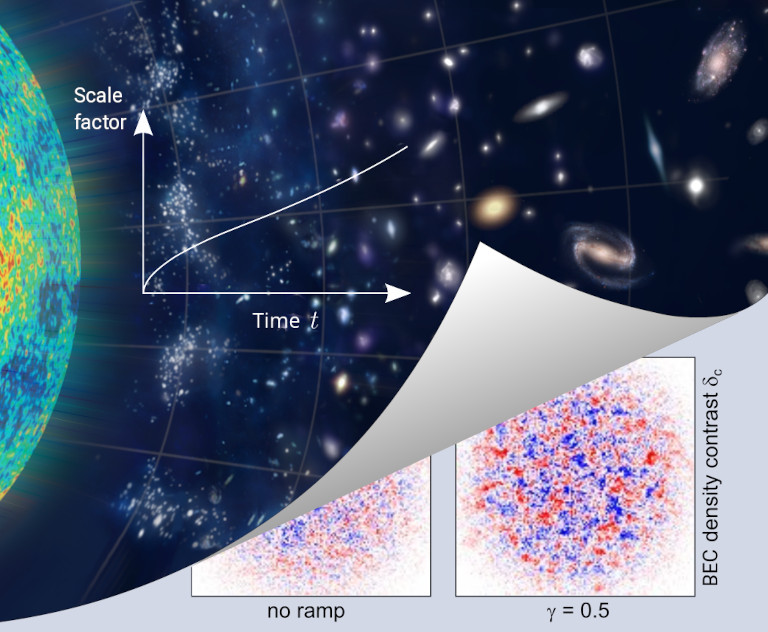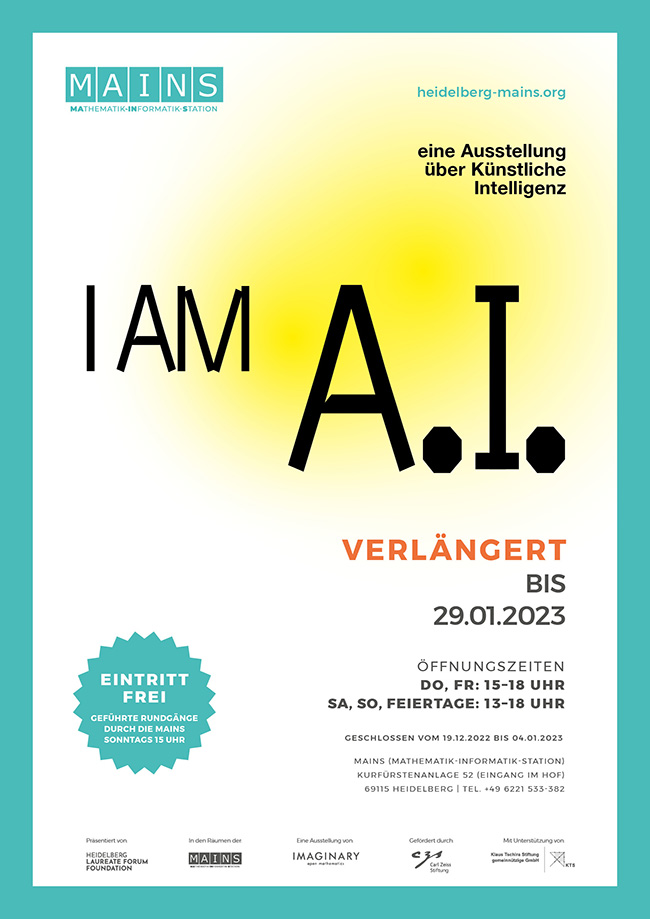Newsroom
Stay informed with our latest news and announcements on this page. For more in-depth content, we also encourage visitors to explore our bimonthly STRUCTURES Newsletter magazine, which features a variety of articles, interviews with members, and background information on our latest research and activities.

In the new episode of Marsilius im Gespräch, the Podcast of Heidelberg's Marsilius Kolleg, Friederike Nüssel talks to Andreas Dreuw (Chemistry), Robert Scheichl (Mathematics, STRUCTURES Cluster) and Jan Schuhr (Law) about chances, limitations and risks of Artificial Intelligence (AI). During their time as Marsilius Fellows, the three scientists have been working on an interdisciplinary project Künstliche Intelligenz: Zwischen Wunderglaube und Wissenschaft.
The Marsilius Kolleg at Heidelberg University bridges the gap between sciences and humanities through meetings and joint projects, which in turn promotes understanding and cooperation between the sciences and the humanities. Founded in 2007, the Marsilius Kolleg is a central component of Heidelberg’s successful proposal granted by the Excellence Initiative, launched by the federal and state governments of Germany.
Weblinks:A.I. or Artificial Intelligence – a technology that increasingly finds its way into our everyday lives. On one hand, it can make life easier in certain areas and complement human abilities, but A.I. can also cross boundaries. I AM A.I. – Artificial Intelligence Explained addresses questions surrounding A.I. and the novel traveling exhibition opened to the public for the first time ever in the Mathematics Informatics Station (MAINS) of the Heidelberg Laureate Forum Foundation. A wide array of interactive exhibits enable visitors to look at Artificial Intelligence from different angles and learn more about both its possibilities and limitations. Exciting experiments, videos and images show the mathematical methods behind the technology that vividly convey how A.I. works and where it is applied. Guided tours of the MAINS take place every Sunday at 2, 3 and 4 p.m. (in small groups). Registration is not required.
I AM A.I. was developed and implemented by IMAGINARY with funding from the Carl Zeiss Foundation and support by the Klaus Tschira Stiftung.
More information can be found at the MAINS' exhibition website.
Viruses have always fascinated physicists due to their apparent simplicity: a small genome protected by a shell of proteins and sometimes by an additional layer of lipids, highly optimized in regard to assembly, mechanical stability and information storage. This year's Bad Honnef Summer school, which will take place from September 10 - 15, 2023 at Physikzentrum Bad Honnef, Germany will provide a comprehensive view on biological viruses from the viewpoint of physics, bridging all the scales in from biomolecular structure through infection of single cells to virus spread in populations. The summer school is organized by Sarah Köster (Göttingen) and Ulrich Schwarz ( STRUCTURES, Heidelberg) and targeted to advanced physics students, but also open to PhDs and Postdocs.
More information can be found at www.pbh.de.
Special Seminar by Pierre Haas on Cutting Through the Mechanics of Cell Sheet Folding, EMBL HD, Jan 20
On Friday, January 20 at 2 pm (CET), Pierre Haas from Dresden will be giving a talk on Cutting Through the Mechanics of Cell Sheet Folding as part of the Next Generation Seminar Series of Theory@EMBL at EMBL in Heidelberg:
Title: Cutting Through the Mechanics of Cell Sheet Folding
Abstract: The folding of cellular monolayers is a crucial step of multicellular development, including gastrulation, neurulation, and organogenesis, and is often driven by localized "large bending deformations" of apical constriction and cell wedging. The simplest process in which to study its mechanics is perhaps the inversion of the green alga Volvox, the spherical embryos of which turn themselves inside out through a programme of cell shape changes. In the first part of my talk, I will show how a theoretical model in which apical constriction and cell wedging appear as variations of the intrinsic curvatures of an elastic shell reproduces Volvox inversion quantitatively. I will highlight the novel mechanics resulting from these large bending deformations. In the second part of my talk, I will present recent laser ablation experiments revealing additional geometric incompatibilities between the local intrinsic curvature of the cell sheet and its global shape. I will discuss the mechanics of the resulting residual torques in the cell sheet and show how even small incompatibilities of this kind affect tissue folding. This suggests a more global picture of the mechanics of tissue folding, which does not therefore rely on localized apical constriction and cell wedging only, but also on other, more subtle cell shape changes in other parts of the tissue.
Time & place: Friday, January 20th 2023, EMBL Large Operon and via Zoom
Host: Virginie Uhlmann
If you would like to meet with the speaker (individually or in small groups), please sign up for a slot here (contact: Lizette Michele De Paula, EMBL.)
The STRUCTURES Project Management Office is happy to answer questions.
HeiUP Releases Four New Books in Lecture Notes Physics by STRUCTURES Member Björn Malte Schäfer
We are pleased to announce the release of four new books in Heidelberg University Publishing's (HeiUP) Lecture Notes Physik series, written by Björn Malte Schäfer, Professor of Fundamental Physics at the Center for Astronomy Heidelberg (ZAH). The four books, titled:
provide comprehensive overviews of key topics in theoretical physics, modern cosmology, relativity and statistics. The books are also available online at the webpage of HeiUP Lecture Notes Physik.
We are happy to present the ninth volume of the STRUCTURES Newsletter with the following topics:
- Recap 2022 and Happy Holidays
- Symmetric Spaces for Machine Learning – Representation Matters! (Project Report by Diaaeldin Taha)
- STRUCTURES Asks: Lavinia Heisenberg
- We Are STRUCTURES
The STRUCTURES Project Management Office is happy to answer questions and to receive feedback.

STRUCTURES Scientists Simulate Curved and Expanding Spacetime Using Ultracold Atoms
In a laboratory experiment, a team of STRUCTURES researchers from CP 4 at Kirchhoff-Institute for Physics (KIP) and Institute for Theoretical Physics (ITP) have succeeded in realising an effective spacetime that is experimentally controllable. In their research with ultracold quantum gases of potassium, they were able to simulate an entire family of curved universes to investigate different cosmological scenarios and compare them with the predictions of a quantum field theoretical model. “For the wave-like excitations on the condensate, the propagation speed depends on the density and the interaction of the atoms. This gives us the opportunity to create conditions like those in an expanding, spatially curved universe,” explains Prof. Dr Stefan Flörchinger. The researcher, who previously worked at Heidelberg University and joined the University of Jena at the beginning of this year, elaborated the theoretical mapping of the atomic system to a noninteracting quantum field in a curved and expanding metric, which was used to benchmark the experimental results.
The success of this experiment shows that quantum field simulators offer the possibility to enter unexplored regimes in quantum cosmology. “Studying the interplay of curved spacetime and quantum mechanical states in the lab will keep us busy for some time to come,” says Prof. Dr Markus Oberthaler, head of the experimental group and STRUCTURES speaker.
Further reading and information:
- Original Publication 1: Viermann, C., Sparn, M., Liebster, N. et al.: “Quantum field simulator for dynamics in curved spacetime”. Nature (2022)
- Original Publication 2: Tolosa-Simeón, M., Parra-López A., Sánchez-Kuntz N., et al.: “Curved and expanding spacetime geometries in Bose-Einstein condensates”, Physical Review A (2022)
- Article in VICE: Scientists Simulate Early Universe With Quantum State of Matter In Mind-Bending Lab Experiment
- Website: Synthetic Quantum Systems collaboration


